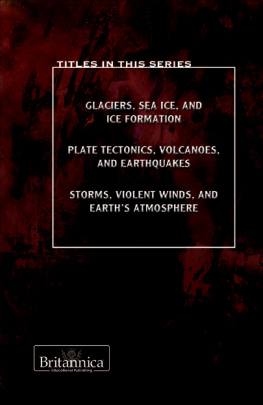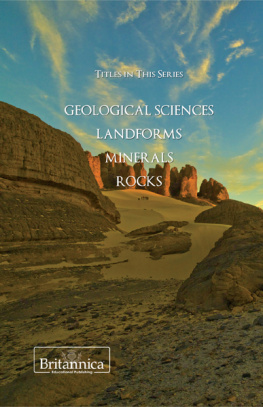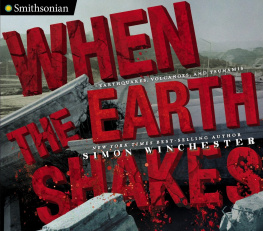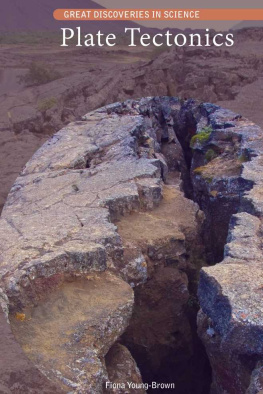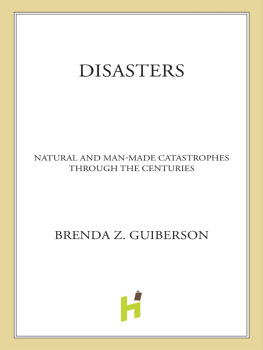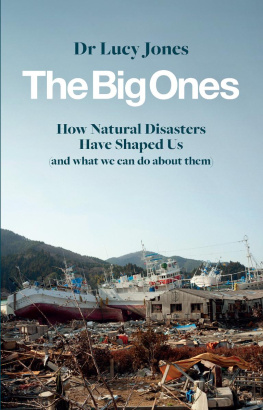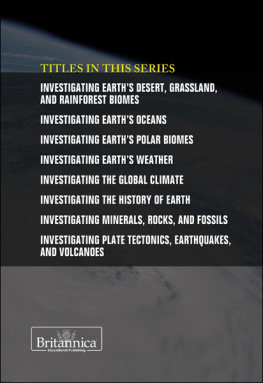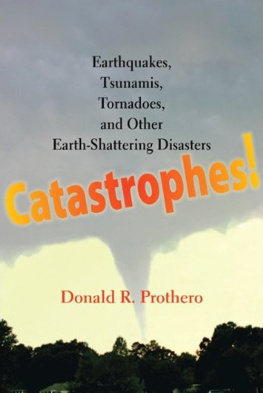PLATE TECTONICS, VOLCANOES, AND EARTHQUAKES
DYNAMIC EARTH
PLATE TECTONICS, VOLCANOES, AND EARTHQUAKES
EDITED BY JOHN RAFFERTY, ASSOCIATE EDITOR, EARTH SCIENCES

Published in 2011 by Britannica Educational Publishing
(a trademark of Encyclopdia Britannica, Inc.)
in association with Rosen Educational Services, LLC
29 East 21st Street, New York, NY 10010.
Copyright 2011 Encyclopdia Britannica, Inc. Britannica, Encyclopdia Britannica, and the Thistle logo are registered trademarks of Encyclopdia Britannica, Inc. All rights reserved.
Rosen Educational Services materials copyright 2011 Rosen Educational Services, LLC.
All rights reserved.
Distributed exclusively by Rosen Educational Services.
For a listing of additional Britannica Educational Publishing titles, call toll free (800) 237-9932.
First Edition
Britannica Educational Publishing
Michael I. Levy: Executive Editor
J. E. Luebering: Senior Manager
Marilyn L. Barton: Senior Coordinator, Production Control
Steven Bosco: Director, Editorial Technologies
Lisa S. Braucher: Senior Producer and Data Editor
Yvette Charboneau: Senior Copy Editor
Kathy Nakamura: Manager, Media Acquisition
John P. Rafferty: Associate Editor, Earth Sciences
Rosen Educational Services
Alexandra Hanson-Harding: Editor
Nelson S: Art Director
Cindy Reiman: Photography Manager
Nicole Russo: Designer
Matthew Cauli: Cover Design
Introduction by Therese Shea
Library of Congress Cataloging-in-Publication Data
Plate tectonics, volcanoes, and earthquakes / edited by John P. Rafferty.
p. cm.(Dynamic Earth)
In association with Britannica Educational Publishing, Rosen Educational Services.
Includes index.
ISBN 978-1-61530-187-4 (eBook)
1. Plate tectonics. 2. Volcanoes. 3. Earthquakes. 4. Geodynamics. I. Rafferty, John P.
QE511.4.P585 2010
551.8dc22
2009042303
Cover, pp. www.istockphoto.com/Yali Shi
INTRODUCTION

A volcano erupts on the island of Runion in the Indian Ocean. www.istockphoto.com/Julien Grondin
H umans live on unsteady ground. This fact was made abruptly apparent on January 12, 2010, when a magnitude 7.0 earthquake devastated the Caribbean island nation of Haiti. Because many buildings in this impoverished country were poorly constructed, they could not withstand the shaking and collapsed en masse, particularly in the capital city of Port-au-Prince, 15 miles from the quakes epicenter. Rescue workers desperately combed through rubble, hunting for survivors. By early February, Haitis prime minister estimated that more than 200,000 people had been killed by the earthquakes effects. This type of earthquake, caused by two separate sections, or plates, of the Earths crust sliding against each other is known as a strike-slip earthquake. It is just one example of the restlessness of Earths surface.
This book will show how the movement of rock within the Earth is explained by the theory of plate tectonics, the idea that Earths outer layer is broken into moving pieces. It will show how Earth adds and subtracts land over time. In addition, it will explain how and why volcanoes erupt and earthquakes shake the ground we live on.
As early as 1620, scholars noticed that the outlines of continents could fit together like puzzle pieces. In 1912, German scientist Alfred Wegener first explained the concept of continental drift. He postulated that a single supercontinent, which he called Pangea, once existed, but broke apart into several pieces over geologic time. Wegener cited the existence of similar types of rocks and fossils found from separate continents as proof. He also used continental drift to explain the evidence of major climate and biological changes.
By the late 1960s, scientists had pieced together the how of plate tectonics. Earths crustthe top layer of the lithosphereis broken into pieces called plates. The plates rest on and slide over a layer of plastic and molten rock. As the plates move, they shape the features of Earths surface above, including continents and oceans. Movement takes timea mere 5 to 10 cm (2 to 4 inches) per year in some places, less in others. Hundreds of millions of years have passed since Pangea began to separate into the land masses we know today.
The surface of each tectonic plate is made up of continental crust and oceanic crust. The continental crust is less dense and thus floats higher than oceanic crust. It is also about 40 km (25 miles) thick. While oceanic crust averages about 6.4 km (4 miles) thick. Tectonic plates interact at convergent, divergent, and transform boundaries.
When the boundary of oceanic crust meets, or converges with, continental crust, the more buoyant continental crust stays afloat while the oceanic crust is forced beneath ita process called subduction. The subducting crust melts under the pressure and heat of Earths mantle, and the process offers an explanation of why continental crust is generally older than oceanic crust. When two oceanic plates meet, the older plate subducts under the younger one. In contrast, when two continental crusts meet, neither gives way. Instead, the earth is forced up, creating mountains. The thickness of the crust aids this process. The Himalayas were formed when the plate under India and the plate under Asia met. They are still applying enough pressure to cause the Himalayas to grow taller each year.
Two plates slide past each other at transform boundries. These plate interactions neither create nor destroy crust. Most transform boundries lie beneath the ocean: however, some, such as the San Andreas Fault in California, occur on land. Faults associated with convergent and transform boundries appear as two huge masses of rock tensely locked in place. When the plates build up enough pressure to overcome the friction holding them, the releasing energy causes the ground to shakean earthquake.
Earths volume is a constant. As crust moves, subducts, and is consumed by the mantle, new crust is formed. When some plates move together, other plates move apart, or diverge. At divergent bundries, hot, liquid magma from Earths mantle fills in the gaps and creates new crust. This process contributes to the spreading and expansion of the ocean floor. On land, between two diverging continental plates, the ascending magma creates a rift. The best example of continental rifting is the East African Rift Valley, and evidence suggests that the land east of the rift will separate from Africa one day.
Some scientists doubted Wegener because his ideas about the driving force behind plate movement were unsubstantiated. One of the leading modern theories contends that heat circulating within Earths mantle, essentially convection, causes plate movement.
Paleoclimatologists, for example, provided evidence for plate tectonics. The splitting of Pangea into Gondwana and Laurasia kept Earths polar areas much warmer than they are today. Between about 100 million and 70 million years ago, the poles were warm enough to support forests. Once the plates shifted, wind patterns and ocean currents changed to such a degree that polar ice sheets began to grow. Scientists have also speculated about the major effects of plate tectonics on evolution and diversity of life.
Theories of diverging and subducting plates have informed the study of volcanoes to a great degree. In the mid-1700s,
Next page
